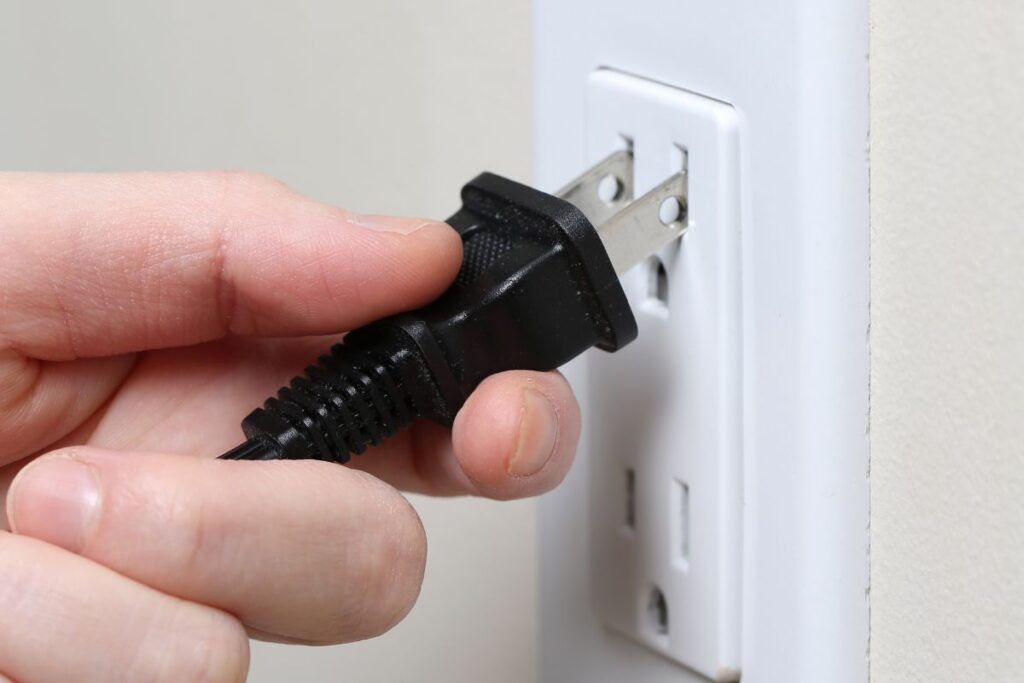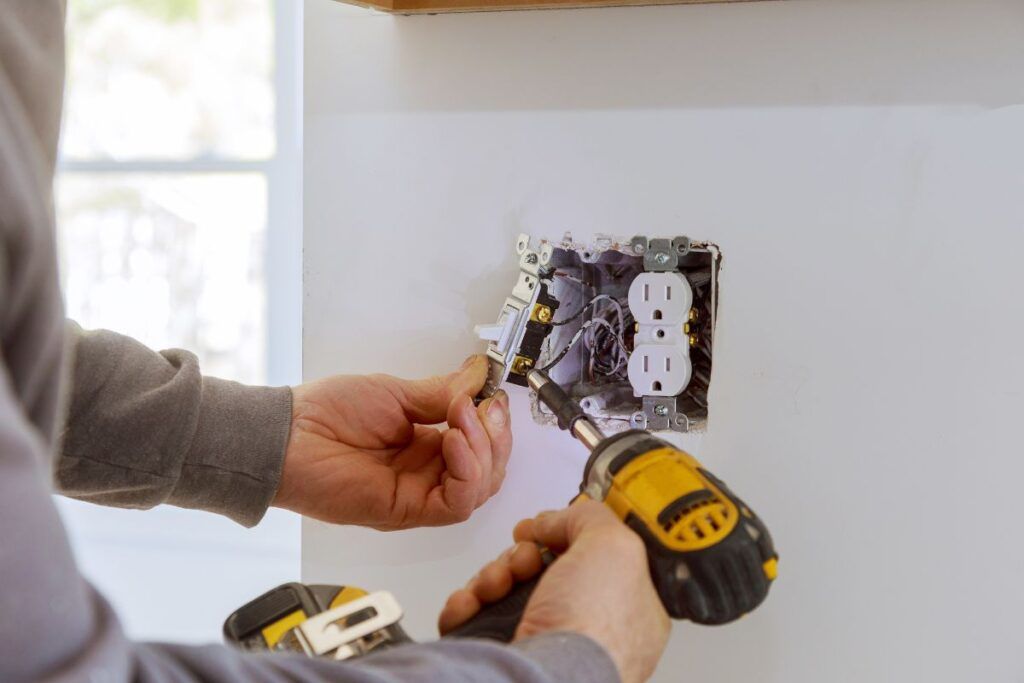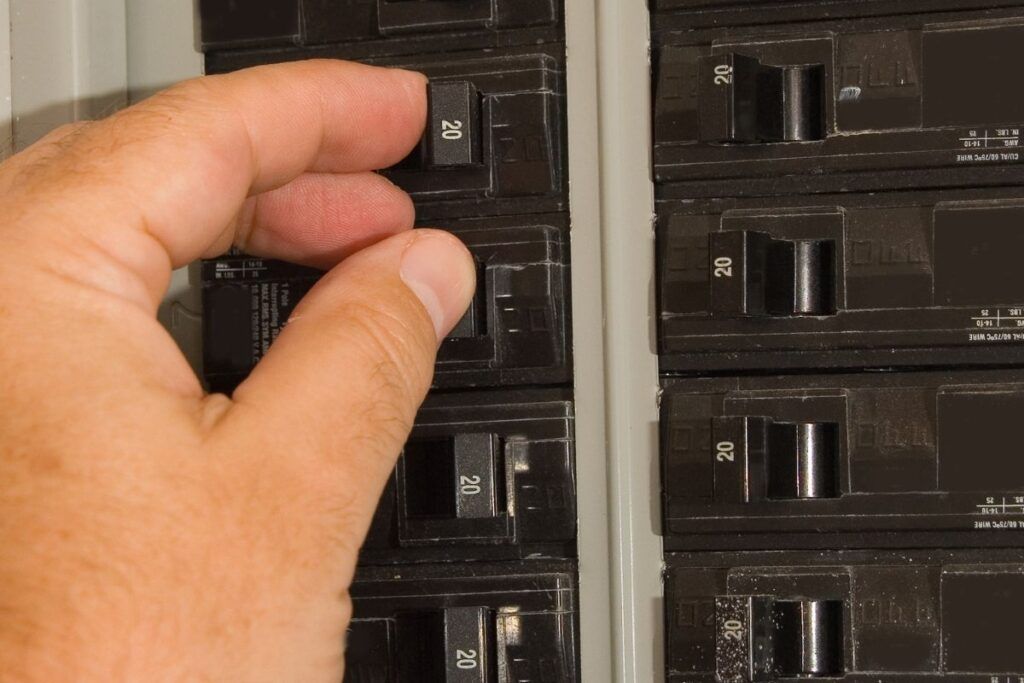It is uncommon and strange when outlets are not working, but the breaker has not tripped. Despite being uncommon, you will face such conditions at one point. Therefore, you must be aware of the reasons behind such a problem.
When the outlet doesn’t work and the breaker is fine, expect issues like loose outlets or wire connections, tripped GFCI, worn-out outlets, half-hot outlets, damaged or poor wiring, or neutral wire issues. Sometimes, the connected gadget is faulty and not the outlet.
You must examine each of the problems one by one to confirm the actual reason. This article shares some common reasons behind an outlet not working and the ways to solve them. So, let’s get right into it without further delay.

Check out our list of top-handpicked products for all your electrical, appliance, and HVAC system needs to keep your home running smoothly.
This post includes some affiliate links.Electrical mysteries: Outlets stopped working
When you face unorthodox issues, you will get confused about how to solve them.
The same is the situation when the outlet does not work, but the breaker has not tripped and is in good condition.
Damaged outlets sometimes indicate that the whole electrical system is faulty. But most of the time, there are other concerns.
But it can be challenging when one or multiple outlets do not work despite having an excellent electrical system and the breaker.
When outlets stop working, we inspect the breaker.
Generally, the circuit and outlets lose power when the breaker trips.
The switches in the breaker are toggled between ON and OFF.
When the breaker trips, the toggle will either be stuck at the center or OFF.
But what if the breaker is ON and has not tripped yet?
Below are some common reasons behind a non-functional outlet with an untripped breaker.
1. Dead outlets
Outlets do not last forever.
Just like other electrical objects, outlets have an expiry date.
Over years of usage, an outlet wears out and expires.
The more frequently you use the outlets, the faster they will tatter out and expire.
At some point, every outlet will stop working.
The wear and tear will gather until your outlet has died completely.
In the old houses, the outlets that were never replaced might have reached the end time and will expire soon.
As a result, when your old outlets do not respond, find out the timespan of your outlet.
There is no fixation for such outlets. Replacement is the only solution here.
2. Burnt-out outlets

When your outlets do not work, try touching and feeling the outlet.
If you ever feel the outlet to be warm, smell burns, or see sparks inside the receptacle, after which the outlet has stopped working, the reason is the burnt-out outlet.
You will see multiple black spots and burn marks when you open the outlet.
There could be various reasons behind the burnouts, for example, short circuits, overloading, surges, and loose wire connections for too long.
Call a professional and get your outlet replaced.
3. Half-hot outlets
A half-hot outlet is a duplex outlet.
One plug is permanently on in this outlet, whereas the other can be turned on and off with a switch.
When you connect an appliance to the outlet, check whether you have plugged the appliance into the outlet so that a switch can turn off.
If you have, check whether the switch is turned on and off.
Sometimes, people fail to realize that the outlet is half-hot and mistake it for something else.
So, before you repair the breaker or the outlet, check whether it is a normal or a duplex one.
4. Damaged wires
When the outlet is not working, and the breaker is still fine, consider checking the wires of the malfunctioned outlet.
When the wires get too old or damaged, it will interfere with the current transfer from the breaker to your outlet, and thus, it will not work at all.
Wires are the pathways through which electricity transfers to the appliances connected to the outlet.
When these wires get compromised by burns, tears, or breakage, they will either stop carrying the electricity or carry it in insufficient amounts.
When the wires get damaged, you need to call an electrician to repair or replace the wires.
Do not attempt any electrical works and tamper them unless you have enough knowledge.
You will have severe electrical accidents and expensive damages if anything goes wrong. So, let the professionals handle them.
5. Poor wiring

When you install the outlets yourself, there are chances of mistakes and poor wiring.
Professionals can also make mistakes, but the chances of mistakes are higher for a layperson.
Laypeople do not have proper ideas about the correct wire connections.
More is needed, even if they have gathered it from YouTube videos and blogs.
If you have failed to secure the wires properly, the outlets will not work despite having an untripped or good breaker.
So, call a professional if you doubt the wire connections and fix them soon before any electrical accidents occur.
6. Loose connections
A loose connection can also interrupt the current flow from the breaker to the outlet wires to the electrical appliances.
Just because the outlet is not working doesn’t mean it has gone wrong.
If the wires are in good shape, loose connections are the culprit.
You can identify the loose connections when you tug the outlet wires slightly at the connectors.
There are three situations where the wires can go loose:
- Unsecured screws on the terminals.
- Wires got loose during stabbing them in.
- Slack in the wires at the junctions
You will find one of these three problems when you check the outlet box.
To check for loose wires:
- Check the screw connections for damaged or worn-out wires.
- Generally, the wires stay bent at each terminal screw. In loose wire connections, the wires will turn beneath the screw, or you can move the screws.
- Examine the screws and wires for rust, damage, or scorch.
- If the outlet connection is loose, replace it.
- The ground, neutral, and hot cable terminals must be looped together before you install the new outlet.
- Use a brass screw for the live wire, silver for the neutral, and a green screw for the ground wire.
- Wind the wires clockwise around the screws, and screw them down.
- Under one wire connection, connect two sets of hot and neutral cables to a third, 6-inch wire piece.
- Attach the slack ends of the pigtails to the screws on the other apt outlets.
Some electricians can reduce the work behind the wiring process by adding wires stripped via holes from the outlet’s back.
Though such wiring does not violate any rules, unsecured wires can cause fires and shocks.
So, here are the steps you need to follow to fix the loose wires at stab-in connections:
- Check the stab-in connections when you check for loose wires in the outlet box.
- Please give them a slight pull to ensure whether the wires are dangling.
- Instead of re-inserting the wires into the socket, attach them to the screw terminal after cutting and stripping them.
Hire a professional if you have not done such work like this before.
Check for slack wires and fix them with the following steps:
- Turn off the breaker.
- Take the end of the wire splice and tug on each cable of the wire bundles to find the disconnected wires.
- The wires will get detached after a slight tug if they are loose.
- Remove the wire harness by cutting and stripping all the wires. Only ½ to ¾ inch of the wires should be visible.
- Gather the wires, align their ends, and twist a new wire connector. Turn the connector in the clockwise direction.
- Turn back on the main breaker and check the outlets to determine if the issue is solved.
7. Neutral wire issues

A loose or damaged neutral wire inside the outlet can also make the outlet stop working despite an untripped breaker.
The hot wire carries the current from the primary power source, and the neutral wire returns it to complete the circuit.
When the neutral wire is loose or damaged, it disturbs and stops the electrical flow from flowing to the outlet.
Even if the breaker is fine, the outlet will not work anymore.
Since it is a significant wire in the electrical circuit, you must hire an electrician to fix it.
A professional can identify the correct wire and reconnect or replace it.
8. Tripped GFCI
Not only GFCI breakers but even GFCI outlets are available.
These are used in wet locations like kitchens, bathrooms, garages, or swimming pools.
The GFCI gets triggered by a ground fault caused by moisture entering the outlet, short circuit, and overloading.
When the current gets diverted from its intended path and starts flowing through an obligatory path, the GFCI interrupts the current flow and trips off the outlet.
The GFCIs have a sensor inside that can predict the danger and trip off, thus, preventing it from shocking the user or damaging the connection device.
So, when your breaker is fine, but the outlet does not respond, the problem is in the outlet.
You can identify this when the outlet blinks the RED button.
To fix the problem, press the RESET button back to the receptacle and hold it until you hear the clicking sound.
To prevent the problem from further occurring, find out the reason behind the tripping and solve it.
9. Tripped AFCI breaker
Sometimes, it is not the breaker but the AFCI breaker that trips, and the outlet stops working.
AFCI breakers, like the GFCIs, can also detect dangerous arcs that can cause harmful electrical fires and trip off.
It can result in a loss of power to the outlets connected to the AFCI circuit breakers. There is nothing to worry about here.
To restore the power in the outlet, RESET your entire breaker. Please turn off the switch and then turn it on.
10. Bad appliance
When the outlet is not providing power to the connected gadget, the outlet is not faulty.
The gadget you have connected may have been damaged.
To confirm the problem, connect other appliances to the same outlet.
Or connect the particular appliance to other outlets.
When other appliances in the same outlet work or the specific appliance doesn’t work with the other outlets, your appliance has gone wrong and needs a repair.
Investigating non-working outlets: How to identify the problems?
Several reasons could be behind an outlet not working despite the untripped breaker.
But how do you identify the correct one?
The above reasons are the common reasons behind this particular issue.
You find the right one; you must check and troubleshoot each reason.
Here are some tips that can help you find out the reasons for the outlet issue:
Check the breaker switches

Check the breakers once the electrical outlets stop working to see whether they have tripped.
If the breakers are not tripped, try resetting them by turning them off and then on.
Press the RESET button until you hear a clicking sound.
If the outlets are still not working, the problem is something else, not the breaker.
Even though the breaker might not be faulty, checking it once allows you to confirm that the breaker is not the culprit.
Examine the wall outlet closely
When your outlet is not working, check and test it instead of blaming the breaker.
Use a voltage pen or non-contact voltage tester to test the outlet’s voltage.
If the outlet is faulty, you won’t find any voltage when you contact the pen with the receptacle.
Check the GFCI and AFCIs
The GFCIs (Ground Fault Circuit Interrupters) and the AFCIs (Arc Fault Circuit Interrupters) have an extra layer of safety.
They contain a sensor that can sense a ground fault and trip the outlet to prevent electrocution and appliance damage.
If you have any GFCI or AFCI outlet or breaker, check it and see whether it has tripped.
Sometimes, multiple outlets are connected to a single GFCI outlet.
If the outlet has tripped, RESET it.
But, if the outlet trips again, turn it off and call a professional.
Power outage in multiple outlets together without a tripped breaker
At times, not one but multiple outlets will go bad, whereas the breakers will remain functional.
In that case, you have the following options to consider:
Series Circuit

You have a series circuit.
In a parallel circuit, the outlets work individually.
When one goes wrong, the others keep working.
But in a series circuit, when one outlet turns off, the others go off too.
Once you know the circuit, inspect the outlet and find out the problem in the outlet to fix the other connected outlets.
Damaged appliance
When you plug in one appliance, and it does not work in any outlet, it is not the outlet to be blamed but your connected device.
To confirm the issue, connect other appliances to the outlet.
If it works, then the previous appliance has been damaged.
But if no outlet works, you have other problems like series circuits.
One GFCI outlet powering multiple outlets
One GFCI outlet can be connected to other regular outlets downstream for safety.
If the GFCI suspects a ground fault in any outlet, both GFCI and other connected outlets will lose power.
The configuration is cheap but frustrating.
You need to check each outlet individually to identify which caused the GFCI to trip.
How to fix the problem?
When multiple outlets lose power, press the RESET button of the outlet with which these outlets are connected.
Or, call an electrician for help or precautions.
The professional will find out the problem in the specific outlet and fix it quickly.
He will also pigtail the individual outlet in the house where the outlets were daisy-chained.
You can ask the expert to connect GFCI to each outlet to prevent further problems.
Final thoughts
When breakers trip, outlets not working is expected. In that case, you check the breaker and restart it. But if the breaker is fine, but the outlets are not functioning, the fault is in the outlet. Either the outlet is d, defective or the wire connections are to be blamed.
Common issues could be dead, burnt-out, or worn-out outlets, poor wiring, loose or frayed wires, tripped outlets (GFCIs and AFCIs), or you have the wrong appliance. To fix the problem, reset your GFCI, change the bad wirings, fix the loose connections, and change the outlets.
If you do not have any electrical work experience, it is better to hire an electrician to fix the problem. When outlets stop working, you should try every alternative to find the exact cause instead of accusing the breaker.
Could anything prevent a circuit breaker from tripping?
You might have overworked the circuit when a breaker does not trip as it should. The breaker might be carrying more current than it is meant to carry. But you have a short circuit or faulty breaker when the breaker trips.
How many appliances can you plug into a single outlet?
It depends on the outlet’s capacity. However, you should not use more than 1-2 devices in a single outlet.
Reference: Electrical Outlets Wikipedia

